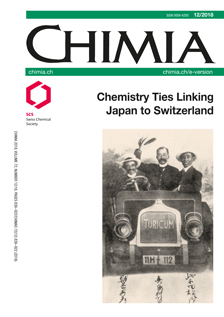Creation of Potent Vitamin D Receptor Agonists and Antagonists with 2α-(ω-Hydroxyalkylation) Concept to the seco-Steroid Skeleton
DOI:
https://doi.org/10.2533/chimia.2018.859PMID:
30648951Keywords:
Agonist, Antagonist, Tachysterol, Vitamin D, Vitamin D receptorAbstract
2α-modification on the vitamin D skeleton with a 2α-(ω-hydroxyalkyl) or 2α-(ω-hydroxyalkoxy) group improves vitamin D receptor (VDR) binding affinity, lengthens the half-life in target cells because of increased resistance to CYP24A1 metabolism, and enhances biological activity. The introduced terminal hydroxy group forms an additional hydrogen bond to Arg274, which is the most important amino acid residue for recognizing the ligand hormone 1α,25-dihydroxyvitamin D3 of human VDR. According to our 2α-functionalization concept, we synthesized several hundred vitamin D analogs, and some had selective potent biological activity, such as bone formation (by AH-1) or anticancer activity (by MART-10), without the side-effects of vitamin D such as hypercalcemia. A potent hVDR antagonist NS-74c and stable 14-epi-tachysterol derivatives are also described in this short review.
Downloads
Published
Issue
Section
License
Copyright (c) 2018 Swiss Chemical Society

This work is licensed under a Creative Commons Attribution-NonCommercial 4.0 International License.







